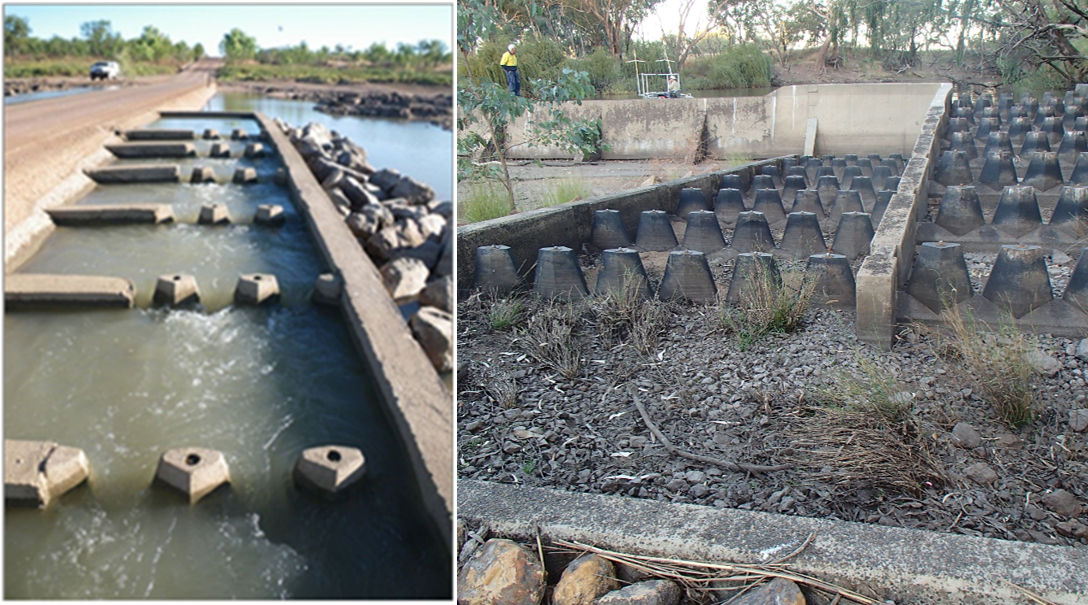|
|
Cone fishwayCone fishway – Planning and design Select from the tabs below In addition to the general information for all fishway types, the following applies to cone fishways. For some sites, fish passage can be better facilitated and possibly have a lower capital cost by installing two fishways with separate ecological/hydrological functions[2]. For example, a cone fishway installed adjacent the existing vertical slot fishway on the Fitzroy Barrage (Rockhampton) extended passage of small fish from 10% to 80%, and exponentially increased the number of fish passing per annum[1]. SlopeCone fishways typically have a relatively gentle slope of 1:21 (vertical:horizontal)[3]. Water velocityWater velocity is related to head loss. The vertical drop between each baffle/pool, the size (volume) of the pool, and the width of the channel and cones determines the turbulence and velocity parameters of the fishway, which in turn determine the size and species of fish that can utilise a fishway. An 80 mm head drop between each baffle has been used in cone fishways. Disclaimer: In addition to the standard disclaimer located at the bottom of the page, please note the Fishways (biopassage structures) disclaimer. References
Last updated: 30 April 2021 This page should be cited as: Department of Environment, Science and Innovation, Queensland (2021) Cone fishway – Planning and design, WetlandInfo website, accessed 8 May 2025. Available at: https://wetlandinfo.des.qld.gov.au/wetlands/management/fish-passage/technologies/fishway-options/cone/planning-design.html |

 — Department of the Environment, Tourism, Science and Innovation
— Department of the Environment, Tourism, Science and Innovation

